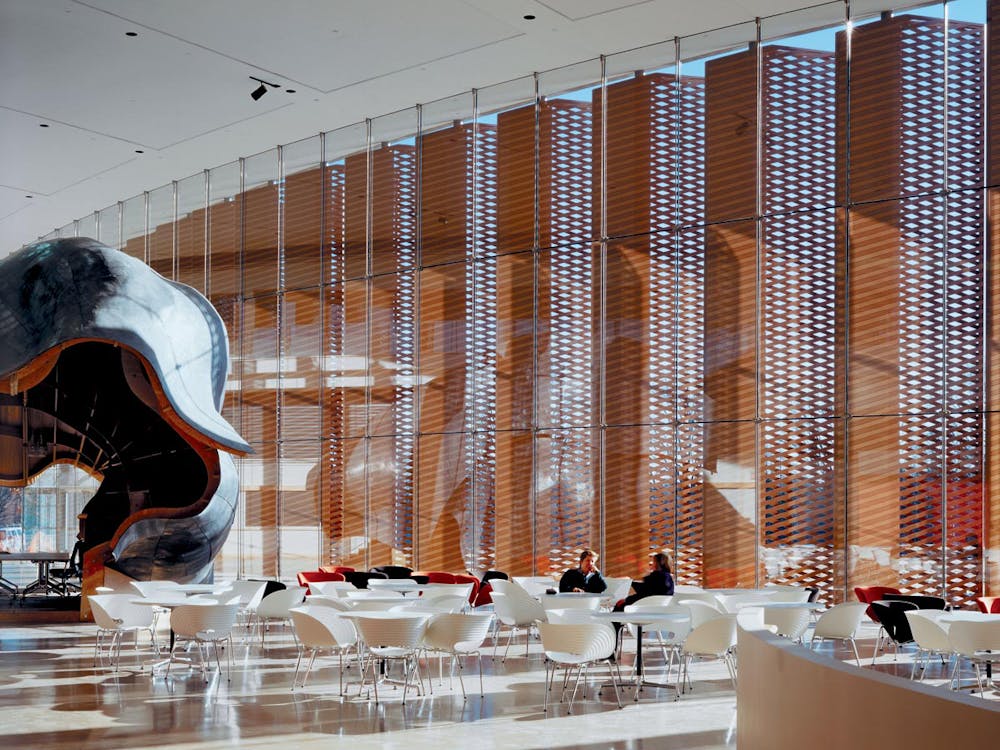COVID-19’s five-year transmission landscape can range from “sustained epidemics” to “near-elimination” depending on the strength of immunity, vaccination rate and effectiveness, and social distancing protocol, University researchers found.
The study, titled “Immune life history, vaccinations, and the dynamics of SARS-CoV-2 over the next 5 years,” was published in Science Magazine on Sept. 21. The model represents the range of pandemic outcomes on a sliding scale, explained Caroline Wagner, a former postdoc in ecology and evolutionary biology and a co-author of the paper. However, more accurate predictions would require a better understanding of COVID-19 immunity.
“Depending upon the assumptions one makes on the strength and duration of immunity, you can get very different outcomes,” added Chadi Saad-Roy, a Ph.D. candidate at the Lewis-Sigler Institute for Integrative Genomics.
The frequency and severity of subsequent infections, for example, play a big part in how COVID’s trajectory will look like. Furthermore, the effects of population and individual variations and viral evolution are also not well-understood. The effectiveness and rate of vaccinations may be imperfect, also affecting transmission trajectory.
“We tried to use a general model that was easy enough to essentially cover all our options for what immune responses could look like,” Wagner noted. “The model is general enough to basically say, ‘we think that this sliding scale could cover the options of what might happen, so why don't we explore everything that can happen on that scale?’”
“If we had 10 years of data, I think we could do some better analysis for you,” she added. “When you're dealing with something that's emerging … it's hard to make predictions about the future when you don't know what the correct set of assumptions are yet.”
Even so, scientists are working rapidly to fill in the gaps. Wagner estimated that more than 400 COVID-related articles come out every day.
It’s been an all-hands-on-deck situation for researchers such as Wagner, who said that working on such a timely issue has increased her focus and energy. The pandemic has also shaped her perspective on how to best communicate science to the public and policymakers.

Saad-Roy comes from a mathematical background. His research focuses on the ecology and evolution of infectious diseases. When something like SARS CoV-2 happens, Saad-Roy said, the questions he tries to answer using disease modeling become highly relevant and applicable.
Both researchers have noticed a greater willingness from the public to listen to science. The public has learned a lot more about disease transmission through the pandemic, Saad-Roy said.
“At the end of the day, science is not a political question. The findings that our model tells us don't depend on anyone’s viewpoints, so we have to go by what we know are effective,” Wagner said. “Short of a vaccine or therapeutic, we know that those are physical distancing, washing your hands, [and] wearing a mask.”
While public health guidelines are not a political issue, the responsibility ultimately lies on political leaders to convey the guidelines in an understandable and consistent way, Wagner said.

“That’s not necessarily what we’ve seen around the world, and so that has to be a priority moving forward,” she said.
Leadership will be important again when a vaccine is developed. The study’s models show how incomplete vaccination rates between different groups will worsen COVID-19’s trajectory, compared to the baseline outcome when everyone agrees to vaccination measures.
Many COVID-19 vaccines are in development, but their effectiveness and release date are a looming question.
Regarding the vaccine timeline, Saad-Roy said, “I think that’s a very big open that everyone’s really keen on.”
“I think it depends on how the trials go,” Wagner said.
“The best thing for the world is to make sure that these trials are conducted safely, scientifically, and that we make sure things are safe and try to get access as equitably and quickly as possible,“ Wagner continued. “But when that’s going to happen, I don't know.”








